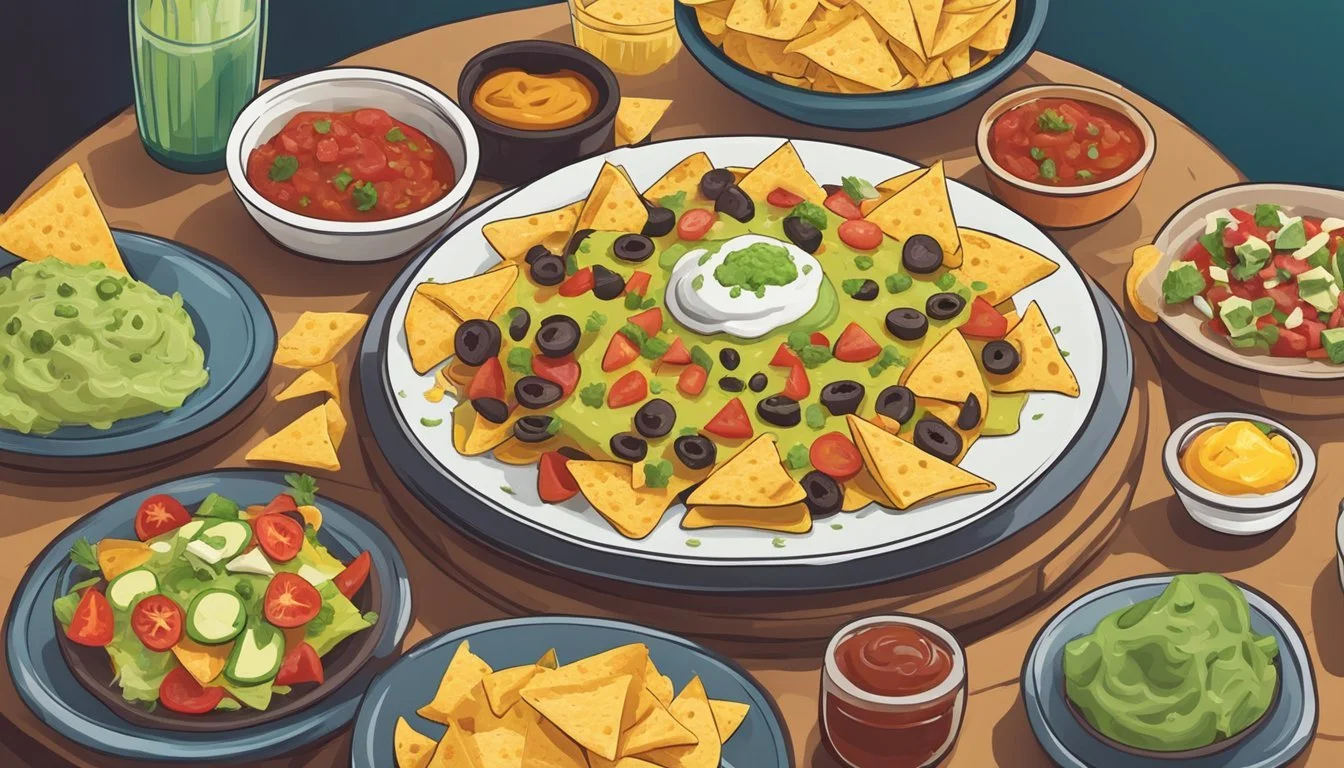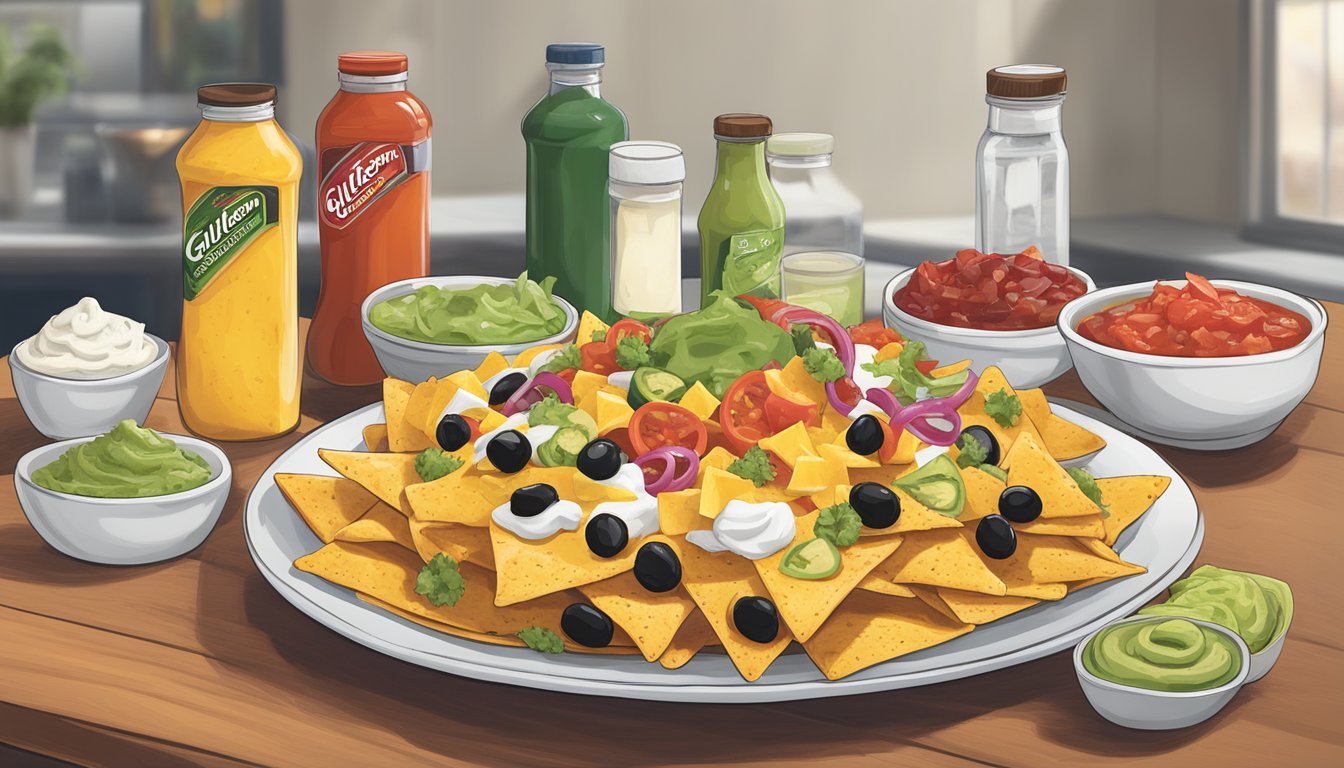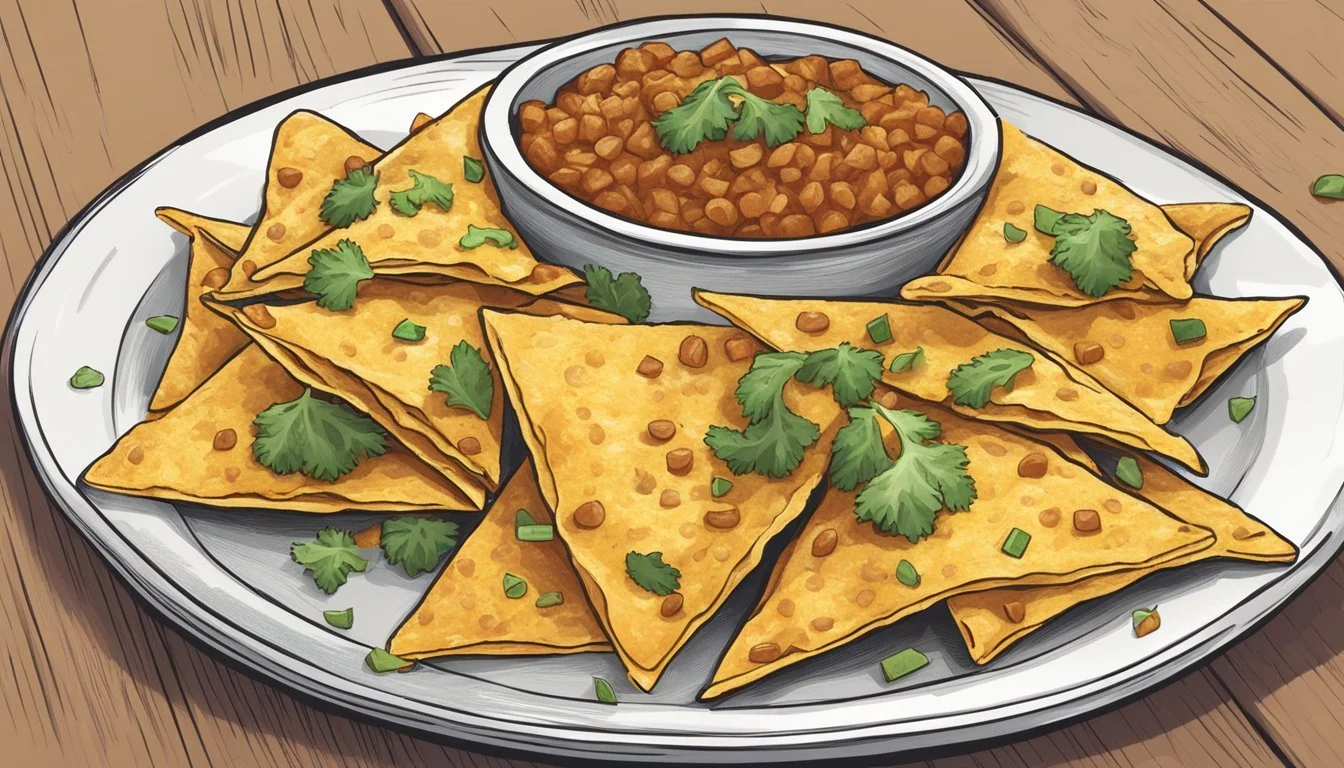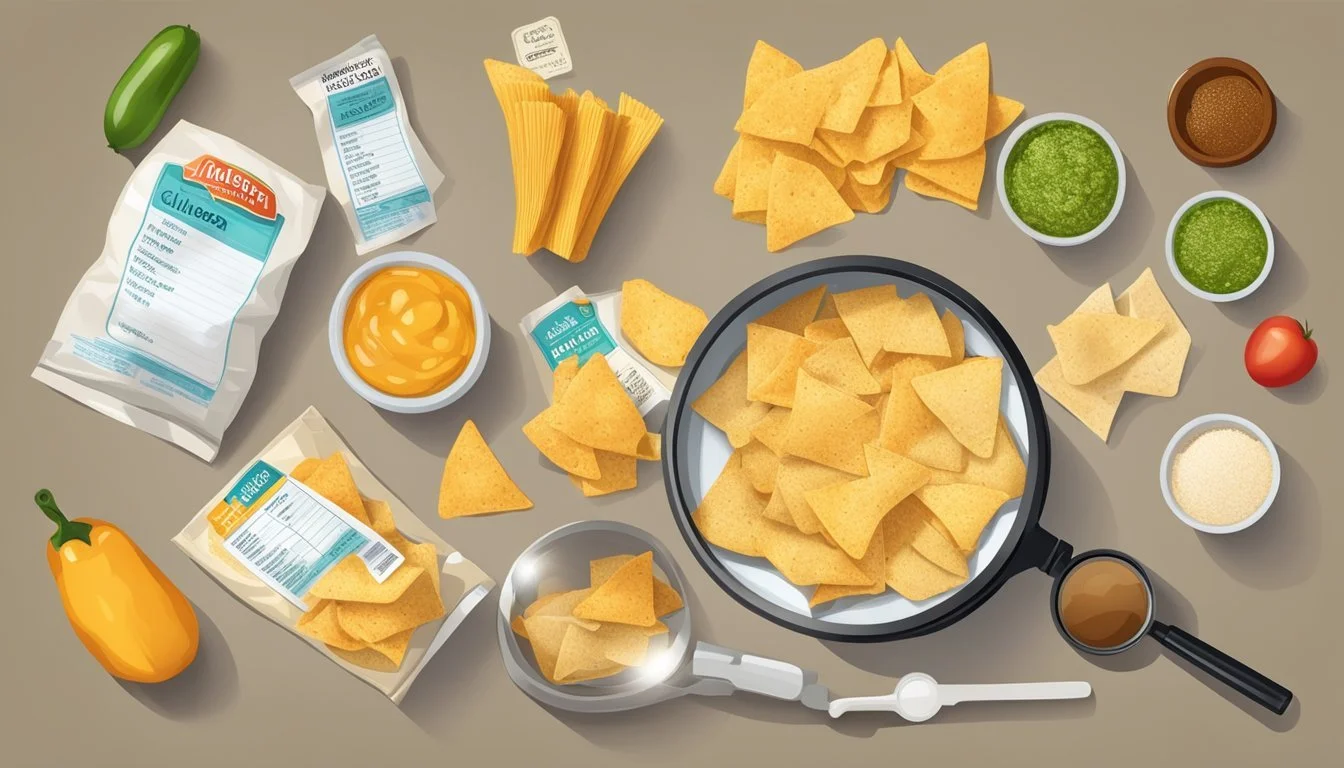Are Nachos Gluten-Free?
Understanding Their Ingredients and Preparation
Nachos, a beloved snack enjoyed by many for their satisfying crunch and melty cheese, often raise questions regarding their suitability for gluten-free diets. Traditionally, nachos are made using corn tortilla chips, which are inherently gluten-free, as they are not made from wheat, barley, or rye. These corn chips serve as a base for a variety of toppings such as cheese, salsa, beans, and meat. For those adhering to a gluten-free lifestyle, it is essential to ensure that every component of the nachos, including the seasoning and sauces, is free from gluten.
The primary concern when assessing whether nachos are gluten-free is the risk of cross-contamination and the inclusion of gluten-containing additives or seasonings. Nachos served in restaurants or public venues like movie theaters, zoos, or snack bars may be more prone to cross-contact with gluten-containing foods. Moreover, seasonings and processed cheese sauces sometimes contain gluten as a thickener or flavor enhancer. It's crucial for consumers to check the labels of packaged nachos or inquire about the ingredients and the food preparation process when dining out.
For those preparing nachos at home, selecting certified gluten-free corn chips and toppings is the best way to ensure they are safe to consume. Many stores offer gluten-free alternatives for the usual nacho accompaniments, allowing those with celiac disease or gluten sensitivity to enjoy this dish without concern. When selecting ingredients like cheese sauce or meat seasonings, vigilance is needed to avoid gluten-containing products that could compromise the gluten-free integrity of the nachos.
What Are Nachos?
The reader should be aware that nachos are a beloved snack or appetizer, which consists of tortilla chips topped with cheese and sometimes additional toppings.
Origin and History
Nachos were invented in 1943 when Ignacio "Nacho" Anaya hastily created a dish for U.S. military wives in Piedras Negras, Mexico. Using what was available in the kitchen, he topped fried tortilla chips with melted cheese and pickled jalapeños, coining the term "Nacho's Especiales".
Traditional Ingredients
The classic nacho recipe includes crispy tortilla chips, melted cheese, and can be garnished with various toppings. Key components of traditional nachos are presented in the list below:
Tortilla chips: Typically made from corn flour, they form the base of nachos.
Cheese: A dairy product, often cheddar or a similar variant, which is melted over the chips.
Toppings: Although optional, they can include items like jalapeños, beans, meats, and salsas to enhance flavor and texture.
The Basics of Gluten
Moving toward a gluten-free diet begins with understanding the fundamental properties of gluten and where it is found. This section provides a clear insight into the nature of gluten and its common sources in the diet.
What Is Gluten?
Gluten is a family of proteins predominantly found in wheat, barley, and rye. It acts as a glue that holds food together, giving it shape and a chewy texture. In baking, gluten is what gives dough its elasticity and enables it to rise. For individuals with celiac disease, ingesting gluten triggers an immune response that can damage the lining of the small intestine.
Sources of Gluten
The primary sources of gluten are grains such as:
Wheat (including wheat varieties like spelt, kamut, farro, and durum, as well as products derived from them, such as semolina and wheat bran)
Barley
Rye
These grains are commonly used in making:
Breads
Pastas
Cereals
Baked goods
Moreover, gluten can be present in less obvious products due to cross-contamination or as an additive for texture, flavor, or as a thickening agent. These may include:
Sauces
Salad dressings
Soups
Processed foods
Gluten-free diets exclude these grains and derivatives, a necessary precaution for those with celiac disease or gluten sensitivity. It's essential for consumers to read labels and be aware of potential gluten-containing ingredients to maintain a gluten-free lifestyle.
Determining Gluten-Free Foods
When seeking gluten-free nachos, two major factors to consider are the product's labeling and the risk of cross-contamination. Understanding these aspects will aid individuals in making safe dietary choices.
Label Reading for Gluten-Free Products
When buying gluten-free tortilla chips or nacho cheese, it's essential to examine the product's label carefully. Individuals must look for key indicators that signify a product is safe to consume:
Look for a Gluten-Free Statement: Products might explicitly state "gluten-free," which implies they contain less than 20 parts per million (ppm) of gluten, the threshold for safety established by regulatory authorities.
Examine Ingredients: Even if a gluten-free statement is absent, one can review the ingredients list for the presence of wheat, barley, rye, oats, malt, and brewer's yeast, which are common gluten sources.
Certification Symbols: Recognition by gluten-free certification organizations can often be found on labels and serves as a further assurance of the product's compliance with gluten-free standards.
Cross-Contamination Concerns
Cross-contamination can occur during the manufacturing, preparation, or serving of foods, which poses a risk for those requiring strict gluten-free diets. Here are specific considerations to minimize such risks:
Dedicated Facilities: Opt for products made in facilities that are dedicated gluten-free, as this reduces the chances of cross-contamination.
Shared Equipment: Pay attention to disclaimers regarding shared equipment with gluten-containing foods, which could mean there is a risk of cross-contamination.
Preparing at Home: When preparing nachos at home, use clean utensils and surfaces or have designated gluten-free kitchenware to ensure the food remains uncontaminated.
By being vigilant about label reading and cross-contamination, individuals can enjoy gluten-free nachos with confidence.
Ingredients in Nachos & Gluten Content
When examining the gluten content in nachos, it is crucial to analyze each component separately, as variations in ingredients often impact whether the dish can be considered gluten-free.
Cheese and Dairy Options
Cheese is generally gluten-free, with natural forms like cheddar being safe for a gluten-free diet. Processed cheese sauces, often used for nachos, can contain gluten as a thickener, so reading labels is essential. Gluten-free consumers can usually enjoy both shredded cheese and cheese sauce as long as they verify the ingredients.
Cheese (shredded or sliced): Typically gluten-free
Cheese sauce: May contain gluten; check for wheat flour or gluten fillers
Tortilla Chips and Alternatives
The foundation of any nacho dish is its tortilla chips. Traditional chips made from corn are inherently gluten-free, but cross-contamination during manufacturing with gluten-containing products can occur. To ensure nachos are gluten-free, one should opt for gluten-free tortilla chips labelled as such to avoid any risk.
Corn tortilla chips: Usually gluten-free but check for cross-contamination warnings
Gluten-free tortilla chips: Specifically labelled as gluten-free and safe for consumption
Common Toppings and Their Gluten Status
Nachos are versatile, allowing a wide array of toppings. Most natural toppings like beans, salsa, avocado, jalapeno, olives, and green onion typically contain no gluten. However, one should be cautious with any purchased toppings, as additives and preservatives can introduce gluten into these otherwise safe toppings.
Beans (refried or whole): Often gluten-free, but confirm there are no added fillers
Salsa: Commonly gluten-free, but always check labels for hidden gluten
Avocado, Jalapeno, Olives, Green Onion: Naturally gluten-free and safe for topping nachos
Gluten-Free Nachos Recipe
Making gluten-free nachos requires careful selection of ingredients to ensure that every layer is safe for those avoiding gluten. The preparation and baking process remains straightforward and can easily cater to both meat-lovers and vegetarians.
Choosing the Right Ingredients
The foundation of a good gluten-free nachos recipe rests in using certified gluten-free products. Begin with gluten-free corn chips as a safe base. Opt for gluten-free taco seasoning to flavor the ground beef or alternative protein. Include fresh vegetables such as tomatoes, chopped onion, minced jalapeño, and cilantro. When choosing cheese, cheddar cheese is typically gluten-free, but always check the label to confirm there are no gluten-containing additives. For extra flavors, select spices such as garlic, cumin, and paprika.
Essential Gluten-Free Ingredients:
Gluten-free corn chips
Gluten-free taco seasoning
Ground beef or vegetarian substitute
Fresh vegetables (e.g., tomatoes, onion)
Shredded cheddar cheese
Spices to taste: garlic, cumin, paprika
Preparing the Nachos
Preheat a skillet over medium heat and brown the ground beef or vegetarian protein. Drizzle in lime juice and stir in gluten-free taco seasoning, garlic, cumin, and paprika. Layer a baking sheet with gluten-free corn chips, spreading them evenly. Spoon the seasoned meat evenly over the chips, and add chopped tomatoes, diced onion, sliced jalapeños, and a generous sprinkle of shredded chedar cheese. To garnish, consider adding dollops of sour cream or guacamole, and a sprinkle of fresh cilantro.
Baking Instructions
Preheat the oven to 350°F (175°C). Place prepared nachos in the center rack of the oven. Bake for approximately 15-20 minutes or until the cheese is melted and chips are slightly golden. Be attentive and avoid over-baking to prevent chips from burning. Remove from the oven and allow the nachos to cool slightly before serving.
Oven Settings:
Temperature: 350°F (175°C)
Position: Center rack
Time: 15-20 minutes
Serve the gluten-free loaded nachos immediately after baking for optimal taste and texture, offering a delicious, quick, and easy meal suitable for a crowd.
Nutritional Information
In this section, readers will gain insight into the calorie content and nutritional benefit-to-concern ratio of gluten-free nachos, considering its key components.
Calorie Content
The calorie content of gluten-free nachos can vary depending on the ingredients used. A basic serving of nachos, which typically includes a handful of corn tortilla chips topped with cheese, may contain approximately 300-600 calories. However, additional toppings such as meat, beans, sour cream, and guacamole can increase the calorie count. Here's a general breakdown:
Corn chips: 140 calories per ounce
Cheese: 100 calories per ounce
Ground beef (cooked): 70 calories per ounce
Total (approximate): Assuming 2 ounces of chips, 1 ounce of cheese, and 2 ounces of meat, one ends up with around 400 calories per serving without considering extra toppings.
Nutritional Benefits and Concerns
Nutritional Benefits:
Gluten-free nachos provide several nutritional benefits, particularly if made with whole, unprocessed ingredients.
Protein: An essential macronutrient for muscle repair and growth, protein can be found in the cheese and meat toppings of nachos.
Fiber: Corn chips, especially if they are made from whole grain corn, can provide dietary fiber, important for digestive health.
List of potential benefits based on the ingredients:
Corn chips: May contain fiber.
Cheese: A source of calcium and protein.
Meat toppings: Provide protein and iron.
Nutritional Concerns:
Nutritional drawbacks need to be considered as well:
Fat Content: Both cheese and meat can contribute to the overall fat content, particularly saturated fat, which should be consumed in moderation.
Sodium: Processed toppings can significantly increase the sodium levels of the meal.
Table: Nutritional Facts for Basic Gluten-Free Nachos (per serving)
Nutrient Amount Calories ~400 Fat Varies Protein Varies Fiber Varies Sodium Varies
The exact figures will depend on the specific brands and amounts of the ingredients used. It is essential for individuals to check the nutrition facts of each component to ensure it aligns with their dietary needs.
Dining Out with Gluten Sensitivity
When navigating the restaurant scene with gluten sensitivity, it is crucial to understand the specific challenges faced when ordering typically gluten-heavy appetizers like nachos. Armed with the right questions and knowledge, diners can make informed choices.
Eating Nachos at Restaurants
For those with gluten sensitivity, finding gluten-free options at restaurants, especially for appetizers (What wine goes well with appetizers?) like nachos, can be a delicate task. The risk of cross-contamination is a genuine concern, as many kitchens use the same surfaces and utensils for both gluten-free and gluten-containing foods. However, some restaurants are attentive to these needs and may offer gluten-free nachos, ensuring that the chips are not wheat-based and that they are prepared in a separate, safe area.
Ingredients: The primary components of nachos are tortilla chips and cheese sauce. The tortilla chips should be made from corn rather than wheat to ensure they are gluten-free. As for the cheese sauce and other toppings, these should be verified as gluten-free.
Certification: Some establishments may be certified by gluten-free accreditation programs, indicating a higher level of commitment to catering to gluten-sensitive patrons.
Questions to Ask When Ordering
It's vital for individuals with gluten sensitivity to engage with restaurant staff to ensure their meal is truly gluten-free. Here are the essential questions to ask:
About the Menu: "Do you have a gluten-free menu or gluten-free options for appetizers like nachos?"
Ingredients Confirmation: "Are your nachos made with corn chips and, is all the toppings gluten-free?"
Kitchen Practices: "Can you confirm that the nachos are prepared in a separate area with clean utensils to avoid cross-contamination?"
By asking these pertinent questions, diners can feel more comfortable and secure in their dining choices while still enjoying appetizers like nachos.
Tips for Gluten-Free Nachos at Home
Making gluten-free nachos at home is simple and rewarding, especially when armed with the right tips to ensure they are delicious and free from gluten. Here are specific guidelines for crafting your gluten-free loaded nachos and what to do with leftovers.
Creative Variations
Choosing Your Chips: Always start with gluten-free tortilla chips. Check the packaging to ensure they're certified gluten-free.
Proteins: Opt for natural proteins like ground beef or shredded chicken. When using pre-made seasoning packets, confirm they are gluten-free.
Toppings: Add a variety of vegetables like bell peppers, tomatoes, and jalapeños. For dairy, use cheeses that are labeled gluten-free. If including beans, verify they are free from gluten-containing additives.
Sauces and Extras: Be cautious with salsa, sour cream, and guacamole. Opt for brands that are certified gluten-free or make your own.
For an easy gluten-free loaded nachos recipe, layer gluten-free tortilla chips with your choice of gluten-free toppings like seasoned ground beef and shredded cheese. Bake in the oven at approximately 350°F (180°C) for about 20 minutes or until the cheese is melted.
Storing and Reheating
Storing Leftover Nachos: Refrigerate any leftover nachos in an airtight container. They will keep for up to two days, although the chips may soften.
Reheating Nachos: For best results, reheat nachos in the oven or toaster oven at 350°F until warm and the cheese is bubbly. Using a microwave can quickly turn nachos soggy, so it's not recommended for optimal texture.
By following these concise tips and being vigilant about ingredients, one can easily enjoy quick and easy, delicious, gluten-free nachos at home.
Understanding Food Labels and Regulations
When choosing foods such as nachos, understanding labels and regulations is crucial for those requiring a gluten-free diet. The labels not only inform consumers about the gluten content but also ensure compliance with strict standards.
Gluten-Free Certification
Gluten-free certification implies that a product has met stringent criteria set by certifying organizations. It is a voluntary process where manufacturers submit their products to be tested and reviewed. A certified gluten-free label assures that the product has been made in a facility that avoids cross-contamination, and the ingredients are gluten-free. For nachos to be considered safely gluten-free, they should display one of the certifications on their packaging.
Ingredients to Look Out For
Consumers should be diligent about reading ingredient lists for potential gluten sources. Ingredients to watch for include wheat, barley, rye, and any hybrids of these grains. Additionally, items such as malt or brewer’s yeast typically contain gluten. For nachos, it is especially important to check not only the chips but also any seasonings or additional toppings that may be included.
Health and Dietary Considerations
When considering whether nachos are suitable for specific dietary needs, it is crucial to understand the potential presence of gluten and to consider healthier ingredient substitutions that add nutritional value without compromising flavor.
Celiac Disease and Gluten Intolerance
For individuals with celiac disease or gluten intolerance, consuming gluten — a protein found in wheat, barley, and rye — can cause adverse health effects. Therefore, they must ensure that all components of nachos are gluten-free. This includes the tortilla chips, which should be made from corn rather than wheat, and the nacho cheese, which may sometimes contain wheat flour as a thickener. It is imperative to check the labels for certification or indications of being gluten-free.
Healthy Substitutions in Nachos
Nachos can be adapted to fit a healthier diet without losing their appeal. Ingredient substitutions can increase the nutritional benefits of nachos:
Cheese: Opt for Monterey Jack or other real cheese varieties and avoid processed nacho cheese, which can be high in fat and additives.
Ground Beef: Use lean ground beef or tempeh (What wine goes well with tempeh?) as a protein source. Both options provide substantial protein with tempeh serving as a vegetarian alternative.
Beans: Incorporating beans adds fiber and additional protein to the dish, making it more satiating while still being gluten-free and potentially dairy-free if cheese is omitted.
Veggies: Layering in a variety of veggies boosts the nutritional profile, offering a range of vitamins and minerals. Options like bell peppers, jalapenos, and red onions enhance flavor and add color.
By considering these aspects, one can not only enjoy nachos that cater to gluten-free needs but also improve the overall healthfulness of this beloved dish.
Additional Resources and Information
When seeking guidance on preparing gluten-free nachos, readers have access to a wealth of resources. These include comprehensive gluten-free guides and cookbooks, as well as supportive online communities that cater to the gluten-free lifestyle.
Gluten-Free Guides and Cookbooks
For those who require detailed information and step-by-step instructions, gluten-free guides and cookbooks are indispensable resources. They often contain a plethora of recipes, including how to make gluten-free nachos, and provide tips on avoiding cross-contamination. Key publications to consider include:
The Gluten-Free Bible by Jax Peters Lowell
The How Can It Be Gluten-Free Cookbook by America's Test Kitchen
Gluten-Free on a Shoestring by Nicole Hunn
Each book delivers a variety of gluten-free recipes and valuable insights about gluten-free ingredients and kitchen practices.
Online Communities and Support
Online communities offer support and a platform to share experiences and recipes. These communities can be found across social media, dedicated forums, and websites. Some notable online spaces for gluten-free individuals include:
The Celiac Disease Foundation's online support group
Gluten-Free Palate, a website offering recipes and tips
BeyondCeliac.org's forums and recipe exchanges
Members of these communities often share their own nacho recipes, which are tailored to be gluten-free, and provide support to individuals navigating a gluten-free diet.











